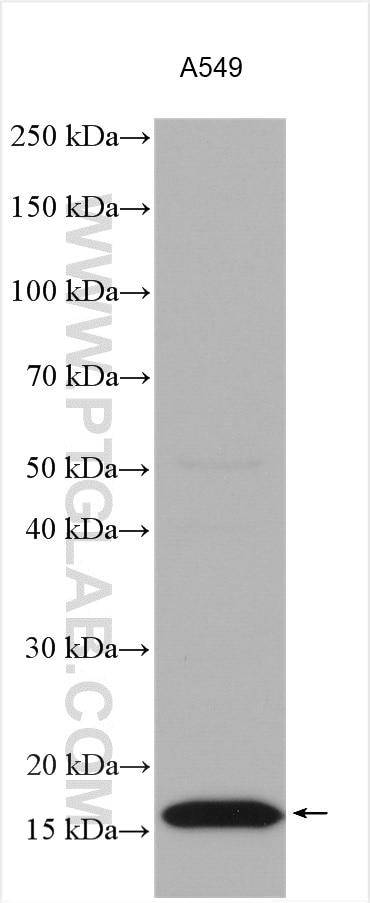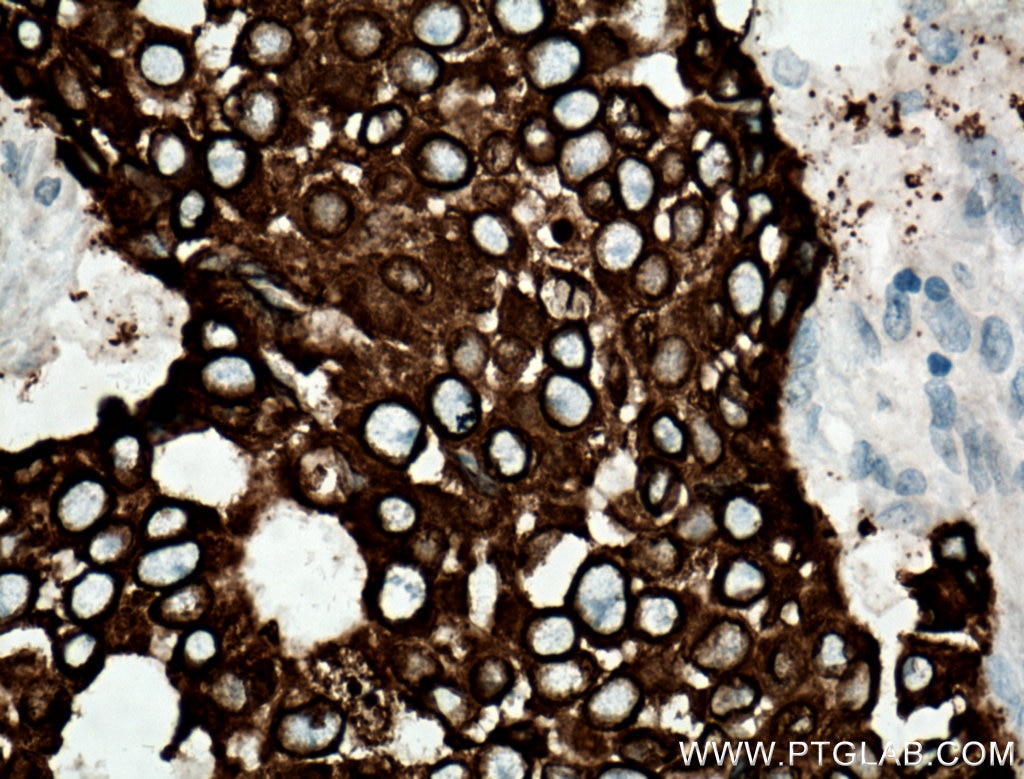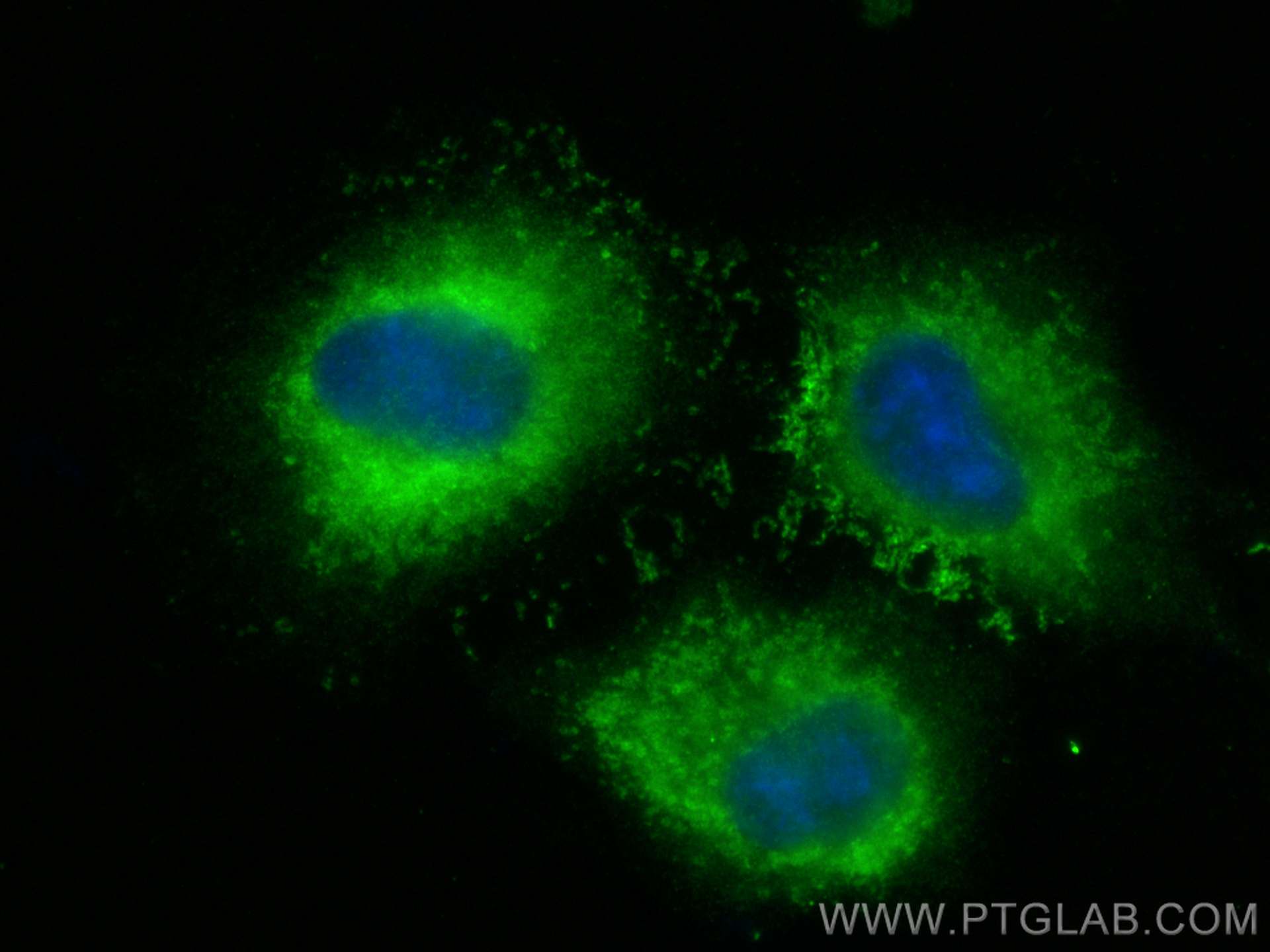Validation Data Gallery
Tested Applications
| Positive WB detected in | A549 cells, rat colon tissue, rat stomach tissue, mouse stomach tissue |
| Positive IP detected in | A549 cells |
| Positive IHC detected in | human breast cancer tissue, human colon tissue Note: suggested antigen retrieval with TE buffer pH 9.0; (*) Alternatively, antigen retrieval may be performed with citrate buffer pH 6.0 |
| Positive IF/ICC detected in | A549 cells |
| Positive FC (Intra) detected in | A549 cells |
Recommended dilution
| Application | Dilution |
|---|---|
| Western Blot (WB) | WB : 1:500-1:2000 |
| Immunoprecipitation (IP) | IP : 0.5-4.0 ug for 1.0-3.0 mg of total protein lysate |
| Immunohistochemistry (IHC) | IHC : 1:50-1:500 |
| Immunofluorescence (IF)/ICC | IF/ICC : 1:50-1:500 |
| Flow Cytometry (FC) (INTRA) | FC (INTRA) : 0.40 ug per 10^6 cells in a 100 µl suspension |
| It is recommended that this reagent should be titrated in each testing system to obtain optimal results. | |
| Sample-dependent, Check data in validation data gallery. | |
Published Applications
| KD/KO | See 1 publications below |
| WB | See 7 publications below |
| IHC | See 9 publications below |
| IF | See 4 publications below |
Product Information
12275-1-AP targets AGR2 in WB, IHC, IF/ICC, FC (Intra), IP, ELISA applications and shows reactivity with human, mouse, rat samples.
| Tested Reactivity | human, mouse, rat |
| Cited Reactivity | human, mouse, rat |
| Host / Isotype | Rabbit / IgG |
| Class | Polyclonal |
| Type | Antibody |
| Immunogen | AGR2 fusion protein Ag2919 相同性解析による交差性が予測される生物種 |
| Full Name | anterior gradient homolog 2 (Xenopus laevis) |
| Calculated molecular weight | 175 aa, 20 kDa |
| Observed molecular weight | 17-20 kDa |
| GenBank accession number | BC015503 |
| Gene Symbol | AGR2 |
| Gene ID (NCBI) | 10551 |
| RRID | AB_2225096 |
| Conjugate | Unconjugated |
| Form | Liquid |
| Purification Method | Antigen affinity purification |
| UNIPROT ID | O95994 |
| Storage Buffer | PBS with 0.02% sodium azide and 50% glycerol , pH 7.3 |
| Storage Conditions | Store at -20°C. Stable for one year after shipment. Aliquoting is unnecessary for -20oC storage. |
Background Information
AGR2, also named AG2 or HPC8, encodes anterior gradient protein 2 homolog which belongs to the AGR family. It is a secreted protein localized in endoplasmic reticulum. AGR2 plays roles in MUC2 post-transcriptional synthesis,secretion and production of mucus by intestinal cells. AGR2 was significantly elevated in the pancreatic juice from patients with pre-malignant conditions as well as pancreatic cancer compared to control pancreatic juice samples. AGR2 levels in pancreatic juice could potentially be used in assessment of high-risk patients undergoing endoscopic procedures.
Protocols
| Product Specific Protocols | |
|---|---|
| WB protocol for AGR2 antibody 12275-1-AP | Download protocol |
| IHC protocol for AGR2 antibody 12275-1-AP | Download protocol |
| IF protocol for AGR2 antibody 12275-1-AP | Download protocol |
| IP protocol for AGR2 antibody 12275-1-AP | Download protocol |
| Standard Protocols | |
|---|---|
| Click here to view our Standard Protocols |
Publications
| Species | Application | Title |
|---|---|---|
Nat Cell Biol Opposing Wnt signals regulate cervical squamocolumnar homeostasis and emergence of metaplasia. | ||
Nat Protoc Patient-derived and mouse endo-ectocervical organoid generation, genetic manipulation and applications to model infection. | ||
Cell Rep Med Distinctive multicellular immunosuppressive hubs confer different intervention strategies for left- and right-sided colon cancers | ||
Proc Natl Acad Sci U S A A discrete population of squamocolumnar junction cells implicated in the pathogenesis of cervical cancer. | ||
J Pathol A novel blueprint for 'top down' differentiation defines the cervical squamocolumnar junction during development, reproductive life, and neoplasia. | ||
Int J Cancer Unique recurrence patterns of cervical intraepithelial neoplasia following excision of the squamo-columnar junction. |









